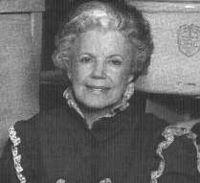Annotation:Valley Forge: Difference between revisions
m (Text replacement - "garamond, serif" to "sans-serif") |
No edit summary |
||
| (2 intermediate revisions by the same user not shown) | |||
| Line 1: | Line 1: | ||
__NOABC__ | |||
<div class="noprint"> | |||
<p><font face="Century Gothic" size="4"> Back to [[{{BASEPAGENAME}}]] </font></p> | |||
</div> | |||
---- | ---- | ||
<p><font face=" | {{#lst:{{PAGENAME}}|abc}} | ||
---- | |||
<div style="page-break-before:always"></div> | |||
<p><font face="Century Gothic" size="3"> | |||
<div style="text-align: justify; direction: ltr; margin-bottom: 90px; margin-left: 70px; margin-right: 120px;"> | |||
<br> | <br> | ||
'''VALLEY FORGE.''' American, Reel (cut time). USA, Arkansas. D Major/Mixolydian. AEae or Standard tuning (fiddle). ABC (Silberberg): AA'AA"BB'CC' (Phillips). From the playing of Ramona Jones, who may herself have learned the melody from Arkansas singer and instrumentalist Jimmie Driftwood. Jones is credited with popularizing the tune among modern old-time fiddlers, although she apparently played the tune in the key of ‘A’ with fiddle cross-tuned in AEae. Most modern old-time fiddlers, however, play it in ‘D’. [[File:ramona.jpg|200px|thumb|left|Ramona Jones]] | |||
Driftwood, born James Corbett Morris was a schoolteacher who gained fame with his song “The Battle of New Orleans” in 1962. However, he learned “Valley Forge” from fiddler Absie Morrison, whose repertoire contained numerous pieces named for events in American history (here named for George Washington and the Continental Army’s Pennsylvania encampment in the winter of 1777-78). Where Morrison obtained the tune, or if the title “Valley Forge” is his own, is unknown. | |||
<br> | <br> | ||
<br> | |||
</div> | |||
</font></p> | </font></p> | ||
<p><font face=" | <div class="noprint"> | ||
''Source for notated version'': Ruthie Dornfeld [Phillips]; Stephanie Prausnitz [Silberberg]; Jimmie Driftwood (1907-1998, Timbo, Arkansas) [Beisswenger & McCann]. | <p><font face="Century Gothic" size="3"> '''Additional notes''' </font></p> | ||
<p><font face="Century Gothic" size="3"> | |||
<font color=red>''Source for notated version''</font>: - Ruthie Dornfeld [Phillips]; Stephanie Prausnitz [Silberberg]; Jimmie Driftwood (1907-1998, Timbo, Arkansas) [Beisswenger & McCann]. | |||
<br> | <br> | ||
<br> | <br> | ||
</font></p> | </font></p> | ||
<p><font face=" | <p><font face="Century Gothic" size="3"> | ||
''Printed sources'': Beisswenger & McCann ('''Ozarks Fiddle Music'''), 2008; p. 181. Phillips ('''Traditional American Fiddle Tunes'''), vol. 1, 1994. Silberberg ('''Tunes I Learned at Tractor Tavern'''), 2002; p. 161. | <font color=red>''Printed sources''</font> : - Beisswenger & McCann ('''Ozarks Fiddle Music'''), 2008; p. 181. Phillips ('''Traditional American Fiddle Tunes'''), vol. 1, 1994. Silberberg ('''Tunes I Learned at Tractor Tavern'''), 2002; p. 161. | ||
<br> | <br> | ||
<br> | <br> | ||
</font></p> | </font></p> | ||
<p><font face=" | <p><font face="Century Gothic" size="3"> | ||
''Recorded sources'': <font color=teal> Happy Valley Records PRP 43871/2) – “Ramona Jones - "Back Porch Fiddlin’.” Heritage Records 36, Ramona and Mark Jones "Women of Old Time Music" (Brandywine, 1980). Rounder CD0364, The Ill-Mo Boys - “The Marimac Anthology: Deep in Old-Time Music. </font> | <font color=red>''Recorded sources'': </font> <font color=teal> -Happy Valley Records PRP 43871/2) – “Ramona Jones - "Back Porch Fiddlin’.” Heritage Records 36, Ramona and Mark Jones "Women of Old Time Music" (Brandywine, 1980). Rounder CD0364, The Ill-Mo Boys - “The Marimac Anthology: Deep in Old-Time Music. | ||
</font> | |||
<br> | <br> | ||
<br> | <br> | ||
</font></p> | </font></p> | ||
<p><font face=" | <p><font face="Century Gothic" size="3"> | ||
See also listing at:<br> | See also listing at:<br> | ||
Jane Keefer’s Folk Music Index: An Index to Recorded Sources [http://www.ibiblio.org/keefer/v01.htm#Valfo1]<br> | Jane Keefer’s Folk Music Index: An Index to Recorded Sources [http://www.ibiblio.org/keefer/v01.htm#Valfo1]<br> | ||
Hear Jimmy Driftwood's field recording at Slippery Hill [https://www.slippery-hill.com/recording/valley-forge]<br> | |||
Hear Ramona Jones' recording at Slippery Hill [https://www.slippery-hill.com/recording/valley-forge-0]<br> | |||
</font></p> | </font></p> | ||
<br> | <br> | ||
---- | ---- | ||
<p><font face="Century Gothic" size="4"> Back to [[{{BASEPAGENAME}}]] </font></p> | |||
</div> | |||
__NOEDITSECTION__ | |||
__NOTITLE__ | |||
Latest revision as of 22:41, 11 December 2019
X:1 T:Valley Forge N:From the playing of fiddler, songwriter and singer Jimmie N:Driftwood (1907-1998), Fayetteville, Arkansas. M:C| L:1/8 R:Reel N:AEae tuning (fiddle) D:https://www.slippery-hill.com/recording/valley-forge Z:Transcribed by Andrew Kuntz K:Amix eg|:a2 ab a2e2|gega g2e2|gega g2e2|cABA F^GAA:| |:+slide+c2 cB A2A2|cAcA faee| +slide+c2 cB A2A2|BAcA BcAA| +slide+c2 cB A2A2|cAcA faee| BAcA BcAA|cABc A2A2:| |:+slide+G2GG- GEFE|GEFE B,CEE|+slide+ G2GG- GEFE|GEFE CB,A,A,:| |:=C-^CCB, A,2A,2|CA,CA, FAEE|B,A,CA, B,CA,A,|B,A,CA, B,CA,A,:|

Driftwood, born James Corbett Morris was a schoolteacher who gained fame with his song “The Battle of New Orleans” in 1962. However, he learned “Valley Forge” from fiddler Absie Morrison, whose repertoire contained numerous pieces named for events in American history (here named for George Washington and the Continental Army’s Pennsylvania encampment in the winter of 1777-78). Where Morrison obtained the tune, or if the title “Valley Forge” is his own, is unknown.
